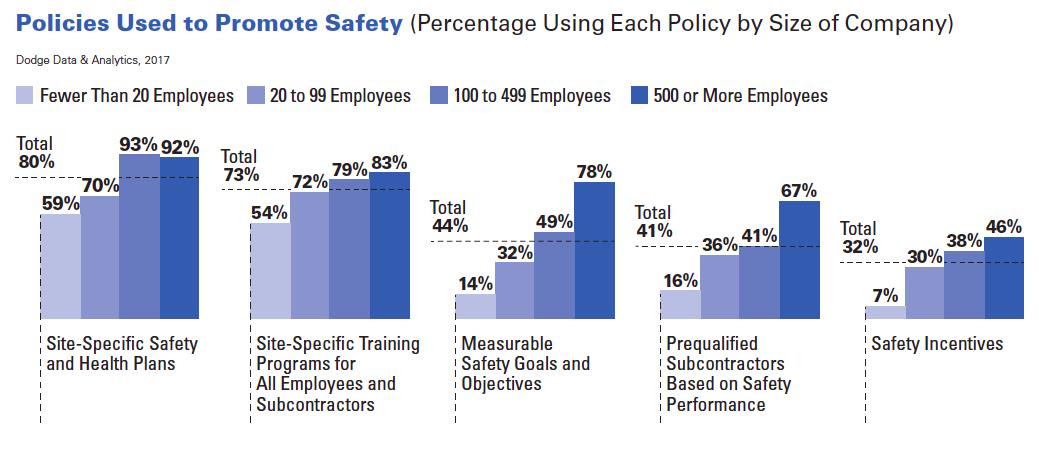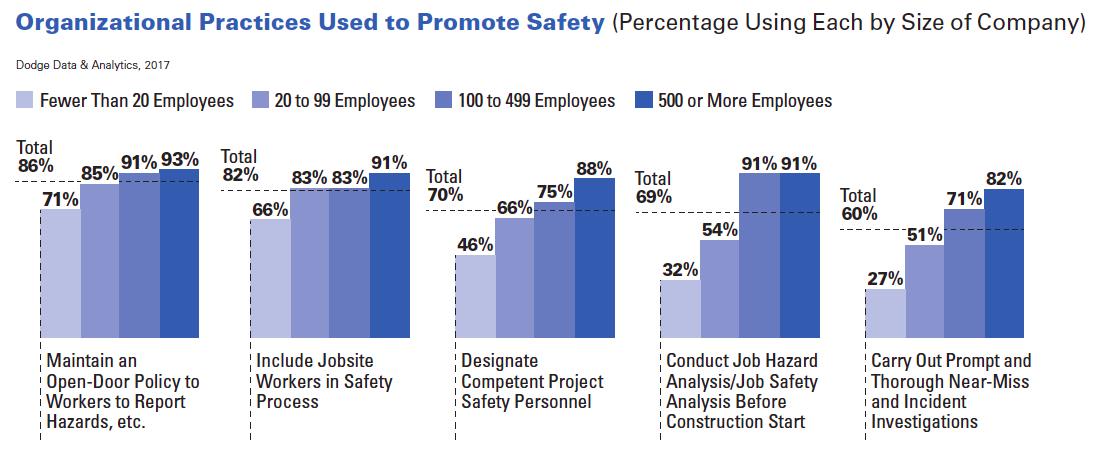Dodge report finds the big players engage in more safety practices — and reap the benefits.
Sometimes, size matters. When it comes to construction, the size of the company may affect how safe its workers are.
According to a 2017 survey of more than 300 contractors by Dodge Data & Analytics, large contractors engage in more safety practices, conduct more safety training and reap more benefits from their safety investments. The results were published in the SmartMarket report “Safety Management in the Construction Industry 2017.”
Contractors implement safety practices for the most obvious reason — to keep workers from harm — and also to reduce insurance costs and protect themselves from liability. But fewer small firms use site-specific safety plans, site-specific training programs for employees and subcontractors, or safety incentives.
Only 54 percent of companies with fewer than 20 employees said they use site-specific safety training for all employees and subs compared with 83 percent of companies with 500 or more employees.
Another stark difference: Far fewer small- and medium-size firms prequalify subcontractors based on safety performance or use measurable goals and safety objectives. According to the Dodge researchers, “Measuring performance consistently across projects can be resource intensive, but the data gathered can help companies create and achieve better safety goals.”

Large companies also differ in how they promote their safety practices, according to the survey. Companies with 100 or more employees are much more likely to:
- Designate competent project safety personnel
- Conduct job hazard analysis before the start of construction
- Carry out prompt and thorough near-miss and incident investigations
Companies with fewer than 20 employees are much less likely to include jobsite workers in the safety process.

How can small companies up their safety game without breaking the bank? Conducting job hazard analyses/job safety analyses might be a smart place to start. According to the Dodge researchers, “In the 2015 study, published in the Building a Safety Culture SmartMarket Report, this was considered one of the most effective safety practices by those who conduct these analyses, and helping small companies do so more frequently could also help improve safety in the industry.”
Getting jobsite workers more involved in the company’s safety program is likely another. Jobsite worker involvement was chosen by the most respondents, out of 12 possibilities, as an essential aspect of a world-class safety program.
For more advice, check out “Safety Tips for the Smallest Construction Companies.”
Marianne Wait is an editor and writer who creates content for Fortune 500 brands.
Images credit: Dodge Data & Analytics

